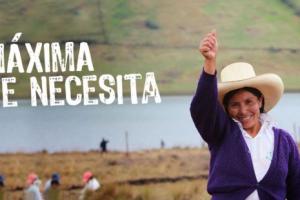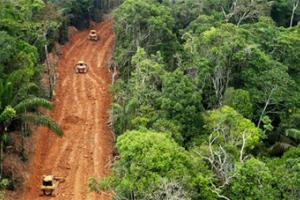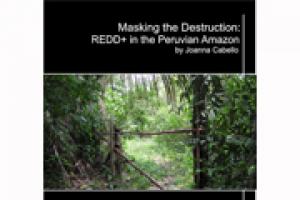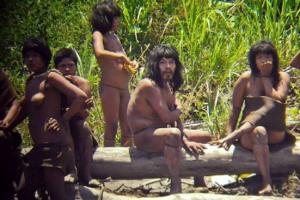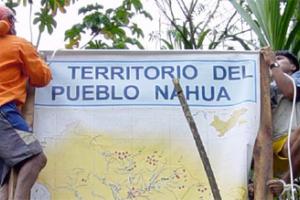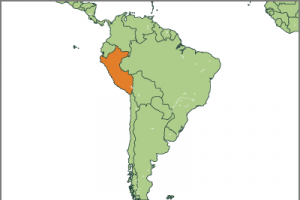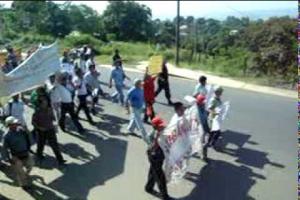Peru
Other information
4 September 2014
Bulletin articles
4 July 2014
"They consider us the periphery of the periphery"
Other information
10 June 2014
A case study of the "Fair Forest Carbon compensation" project of French company Pur Projet, in the region of San Martin, Peru, which aims to generate carbon credits destined, initially, for the voluntary carbon market.
Publications
22 November 2013
By Joanna Cabello, World Rainforest Movement
Other information
2 October 2013
By Global Witness, May 2013.
This report examines a range of factors that Global Witness believes may be unduly influencing the decision-making around the highway project, including alleged corruption and possible conflicts of interest.
Download in pdf format:
Rocky Road. How legal failings and vested interests behind Peru’s Purús highway threaten the Amazon and its people
Bulletin articles
2 October 2013
Photo: Mashco Piro indigenous peoples in the Madre de Dios reserve - By Diego Cortijo - Sociedad Geográfica Española, 2011. Source: Pueblos Indígenas en aislamiento voluntario y contacto inicial, IWGIA – IPES – 2012
Bulletin articles
30 May 2013
The Peruvian Amazon, which covers more than 61% of the country’s territory, is the fourth largest area of tropical rainforest in the world. Thanks to this extensive forest cover, Peru also has an extremely high degree of biodiversity; for instance, it ranks in fifth place worldwide for plant diversity, with close to 25,000 recorded species.
Other information
30 March 2013
Gathered at a fourth binational meeting, representatives of the Matsés indigenous peoples' from Brazil and Peru expressed their opposition to all oil industry activity within their territories in both countries. The Matsés have already suffered the social impacts of oil exploration and experienced its drastic consequences for the flora, fauna and water resources. This is why they demand that the authorities respect their stance, particularly with regard to the defence of the Yaquerana River basin, which is home to indigenous groups living in voluntary isolation, they stressed.
Bulletin articles
5 May 2011
The Shawi indigenous people, also known as Chayhuitas, live in the territory made up by the basins of the Paranapuras and Cahuapanas Rivers, located in the provinces of Alto Amazonas (in the region of Loreto) and San Martín (in the region of San Martín). Distributed among 180 communities, the Shawi share a system of social organization and symbolic representation. Traditionally hunters and gatherers, they also practice agriculture, growing crops like cassava, corn, beans, rice, peanuts, bananas, pineapples, papayas, cotton and tobacco.
Bulletin articles
30 January 2010
The Naso people, also known as the Teribe or Tjer-di, live in the Bocas del Toro province in northeast Panama, in a territory spanning 1,300 km2 and covering most of the river Teribe and river San San basin.
Bulletin articles
30 January 2010
The forest is not for sale! The forest must be defended! This is the clamour in the district of Barranquita, Province of Lamas in the San Martin region. The property rights acquired by the inhabitants of the hamlets in the Caynarachi river basin, located in the Peruvian Amazon, over the land they work have been violated. These people have been real guardians of the forest, looking after -on their own plots- its immense wealth in flora, fauna and water resources.
